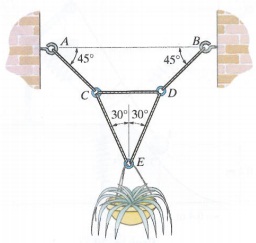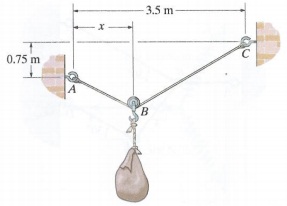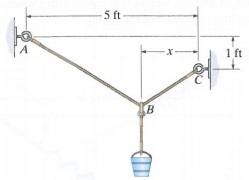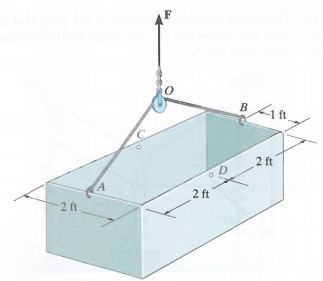Assignment:
Problems:
1. Determine the tension developed in each wire which is needed to support the 50-lb flowerpot.
2. If the tension developed in each of the wires is not allowed to exceed 40 lb, determine the maximum weight of the flowerpot that can be safely supported.

3. Cable ABC has a length of 5 m. Determine the position x and the tension developed in ABC required for equilibrium of the 100-kg sack. Neglect the size of the pulley at B.

4. The single elastic cord ABC is used to support the 40-lb load. Determine the position x and the tension in the cord that is required for equilibrium. The cord passes through the smooth ring at B and has an unstretched length of 6 ft and stiffness of k = 50 lb/ft.

5. The 200-lb uniform tank is suspended by means of a 6-ft•long cable, which is attached to the sides of the tank and passes over the small pulley located at O. If the cable can be attached at either points A and B, or C and D, determine which attachment produces the least amount of tension in the cable. What is this tension?
